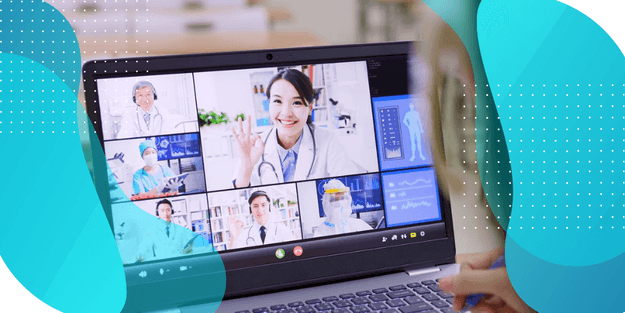Preparing Study Staff, Sites, and Patients for Remote Video Assessments

With the proliferation and widespread acceptance of telemedicine solutions in clinical research, it is imperative to properly prepare everyone involved in a study to use remote healthcare consultation applications optimally. In today’s medical research environment in which clinical raters, study participants, and caregivers often meet virtually or outside of a traditional clinical site, sponsors and CROs should invest substantial time and energy towards calibrating each for remote consultations and assessments. Inadequate planning and preparation endanger the integrity of the study by introducing variations in assessment technique or participant presentation, for example, compared to in-person evaluations at a site.
Study staff preparation
The primary consideration when preparing sites and raters for virtual video consultations is maintaining accuracy and consistency of assessments. To minimize variability or loss of consistency of measurement technique, we recommend that raters be formally trained and calibrated in the remote administration of all relevant scales in advance. For consistency, and to the extent practical, the same rater who performed baseline assessments should perform all subsequent assessments.
A training curriculum should encompass:
- General considerations for remote clinical assessments
- Patient safety and well-being considerations
- Remote scale administration
- Maintaining data quality
In terms of delivery mode, training may encompass staff from sites around the world, introducing potential time zone and language differences as well as connectivity challenges. Online live or pre-recorded delivery with case examples, quizzes, and practice scoring accounts for many or most of these challenges, but the results should inform whether the follow up should be live, either virtually or in person. Accuracy and calibration of raters across and within sites is paramount. If the study will include a mix of in site and remote ratings, the two techniques should be calibrated to produce as similar measurements as feasible.
Participant & study partner preparation
For study participants and their caregivers, the primary focus when utilizing virtual video visits in decentralized trials should be training them how to use the technology in their home environment. Telemedicine solutions are often hosted on a mobile phone or tablet, either using the study participants’ own devices (BYOD) or provisioned devices supplied to them. In either case, the participant and caregiver should be trained on the application’s interface as well as the basics of setting up the environment for an effective video and audio experience. Challenges to address in a training curriculum, aside from application-specific user interface familiarity, include poor audio/video quality or internet connectivity and distractions that may cause the participant to lose focus during the session. In addition, it is important that the remote assessment environment be maintained as consistent as possible across visits.
Signant has developed detailed recommendations and sample curricula to help sponsors and sites effectively prepare for these challenges. Highlights include:
- Environment preparation – Choose a room with adequate privacy so family members and pets do not interrupt you during the visit. Remove clocks and calendars from the room if the assessment includes cognition assessments. Reduce overhead and background lighting.
- Equipment – The camera should be at eye level. Headphones with a built-in microphone provide the best listening experience for each party. Minimize extraneous noise in the room. The lighting and distance of the camera from the subject should be similar across visits, to the extent practicable.
- Assessment preparation – Remind the participant how long the visit is likely to last and verify that they can remain in the session uninterrupted. Check in with the participant through the session to make sure they can hear/see properly. Plan for alternative ways of making contact in the event of a technology failure.
In addition to proper training and preparation, sponsors can also employ data quality monitoring solutions such as Signant’s Blinded Data Analytics to ensure accuracy and consistency of assessments. This solution helps identify areas where additional training or recalibration is needed to maintain quality standards.
Learn more best practices and obtain sample training curricula for successful remote ratings and assessments.


